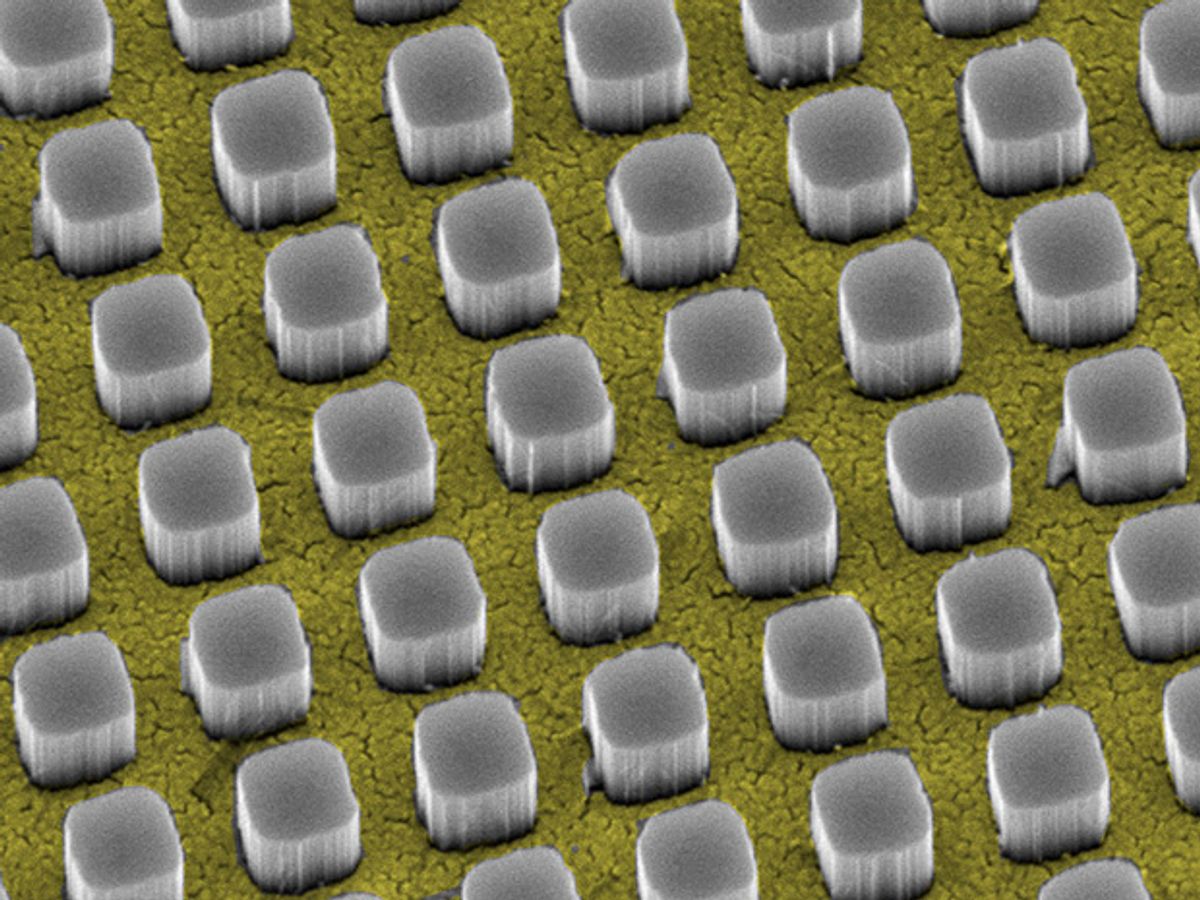Photovoltaics convert the photons from light into a voltage—thus the name. And anything that reduces the number of photons that strike the electric field of the semiconducting P-N junction inside the solar cell will reduce the voltage it generates.
One of things that curtail the amount of photons interacting with the solar cell is the design of the device’s outer layer. In many silicon solar cell designs, a grid of metal wires is employed in order to get the electricity to and from the device. The problem: the wires reflect light away from the surface, reducing the amount of photons that are absorbed. (It should be noted that in some photovoltaics, indium tin oxide is used to create transparent conducting films that stand in for the metal wire grids.)
Researchers at Stanford University have taken a novel approach to addressing this problem by creating a nanostructure comprising so-called nanopillars that rise above the metal surfaces. The nanopillars direct the light into the solar cell in a way that avoids reflection by the metal, effectively making the metal invisible to the incoming light.
In research published in the journal ACS Nano, the researchers were able to fabricate the nanopillars in a one-step chemical process. They started with a 16-nanometer-thick film of gold that had been layered onto a flat sheet of silicon. The gold film was covered with an array of nanoscale holes.
“We immersed the silicon and the perforated gold film together in a solution of hydrofluoric acid and hydrogen peroxide,” said Thomas Hymel, a Stanford graduate student who co-authored the ACS Nano article, in a press release. “The gold film immediately began sinking into the silicon substrate, and silicon nanopillars began popping up through the holes in the film.”
Once the gold-coated silicon is dipped in the chemicals, the metal is transformed from a shiny gold to a dark red, which indicates that the material will no longer reflect light. You can watch a demonstration of this process in the video below:
The results of this change are dramatic. The Stanford researchers estimate that this could increase the efficiency of some silicon solar cells by as much as 22 percent.
“Solar cells are typically shaded by metal wires that cover 5 to 10 percent of the top surface,” said lead author Vijay Narasimhan in a press release. “In our best design, nearly two-thirds of the surface can be covered with metal, yet the reflection loss is only 3 percent. Having that much metal could increase conductivity and make the cell far more efficient at converting light to electricity.”
This nanopillar architecture is not limited to use with gold; it can also function with contacts made of silver, platinum, nickel and other metals. Using the technique with other semiconductor materials could make it useful in applications such as photosensors, light-emitting diodes and displays, and transparent batteries.
Dexter Johnson is a contributing editor at IEEE Spectrum, with a focus on nanotechnology.



